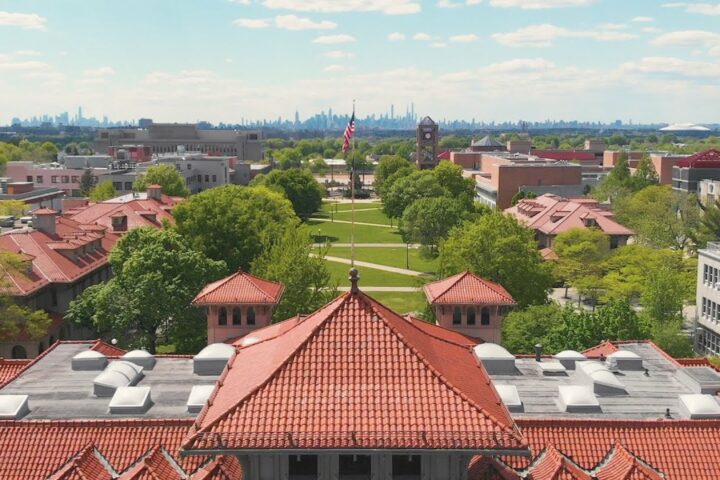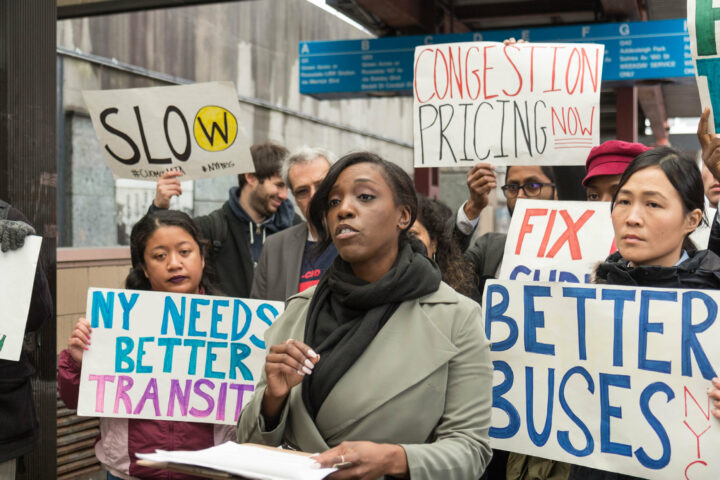“Grief and Grievance: Art and Mourning in America” is an exhibit featured in the New Museum with a prominent, timeless message that speaks to the current social climate today. Curated by the late Okwui Enwezor, the exhibit was intended to be released before the 2020 election as a response to American democracy and the presidency of Donald Trump. However, due to the COVID-19 pandemic and the death of Enwezor on March 15, 2019, the exhibit’s debut was delayed until February 2021. Despite its late release, the showcase still carries a message that aligns with what black Americans are facing in the present day.
Spanning four floors, the exhibit features works from the likes of Nari Ward, an artist from St. Andrew, Jamaica. His installation, titled Peace Keeper, features a tarred hearse, mufflers, and peacock feathers, encapsulated within a cage. The piece was initially featured in 1995 at the Whitney Biennial museum and was again re-created for this exhibit. It is composed of various objects, such as metal pipes and mufflers, found throughout Harlem, NY, where Ward currently resides. By feathering and tarring the vehicle, Ward is showcasing the humiliation and violation experienced by blacks throughout history. The metal pipes are intended to personify human bones, scattered around the vehicle, while being locked in a cage. Mufflers are for reducing noise from a vehicle’s engine, so by suspending them in the air, Ward is presenting the idea of black voices being silenced through the acts of imprisonment and death.
The exhibit also features a series of photos from LaToya Ruby Frazier’s book, The Notion of the Family. Frazier’s book details her firsthand experiences of racial capitalism and deindustrialization in the former steel mill town of Braddock, Pennsylvania. It features the photo, Grandma Ruby on her bed, capturing Frazier’s grandmother who became chronically ill and eventually died due to the toxins resulting from the steel mill industry. The photos also showcase the now-closed UPMC Braddow hospital, as well as buildings and apartments which were destroyed and shuttered due to deindustrialization. These photos are Frazier’s way of capturing the devastation of Braddock while highlighting the economic disparity and challenges of sustaining a Black American community.
The Knight News spoke with artists and students of color to discuss the exhibit and hear their thoughts on the importance of black artistry in today’s social climate. Danaè Reid, a Brooklyn based artist, said, “It’s important for black artists to continue creating right now… Art is my therapy. It makes dealing with reality a bit more bearable and for me, being able to see that my work brings people joy also makes me feel good.” Baraka Carberry, a multidisciplinary artist who is based out of London, added, “It is important to manifest and celebrate black voices. For too long we have been submerged, unheard or discarded. I remember visiting countless galleries and museums, hardly seeing anyone of color hanging on the walls. It is important that this changes and that a newer, brighter path is set forth for future generations..” Mahpara Elahi, senior English major, shared that “Black is not just a color, it’s the echo from which all colors come from. We tend to look for black art when it is already surrounded by all of us. We should continue to honor the purity and unique nature of black artistry.”
It is evident from viewing the exhibit and hearing the thoughts of black artists and students that black artistry plays a vital role in uplifting black voices and exemplifying the truths of what is happening in today’s social climate. Black artistry serves as an avenue for people to speak the truth of what has occurred in the past and present, while giving hope for a brighter future.











